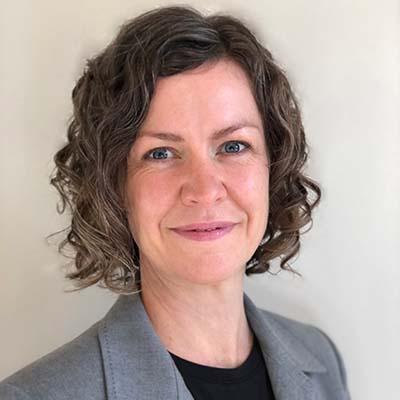IEEFA comments to EPA on emergency and remedial measures for Brown Pelican Project
Download Full Version

The Institute for Energy Economics and Financial Analysis (IEEFA) provides the following comments to the U.S. Environmental Protection Agency, regarding the application for Class VI carbon storage well draft permits by Oxy Low Carbon Ventures LLC (OLCV) for the Brown Pelican project located in Ector County, Texas. The comments focus on the inadequate emergency and remediation measures and insufficient financial assurances included in the draft permits.
1) The emergency and remediation scenarios identified by OLCV do not adequately prioritize the safety of the underground source of drinking water (USDW) or set forth details regarding remediation actions to be taken in the event contamination is detected or provide sufficient funding to address possible contamination of the USDW.
OLCV plans to fund its emergency and remedial response budget at just $2.06 million. While few public documents include unredacted, detailed cost estimate information related to Class VI well programs, at least one project estimated it could cost up to $8.1 million (in 2024 dollars) to address any single occurrence of USDW contamination. The Archer Daniels Midland Class VI project in Illinois provided financial assurance of $44.3 million (in 2024 dollars) for emergency and remedial action, a prescient act given the project’s problems with leaky wells and unexpected brine movement.
Injection wells are subject to corrosion, effects from seismic events, and other types of physical damage. Although according to the OLCV project fact sheet, the confining zone is located more than 3,000 feet below the lowermost USDW, the vertical distance between the confining zone and the USDW should not preclude the operator from a requirement to specify remedial action beyond simply notifying the EPA and local authorities. Costs for performing the remedial actions should be included in the financial assurances document. The amount set aside for remedial action should cover possible occurrence(s) of contamination that may take place at any point during the 12-year period of carbon dioxide (CO2) injection or the 50-year post-injection monitoring period.
OLCV’s emergency and remedial actions document specifies several scenarios in which the USDW could be affected. For nearly all of the emergency scenarios identified that involve potential contamination of the USDW, the only remedial action indicated is consultation with or notification of EPA and/or local authorities. Providing notification is essential but does not constitute a sufficient remedial response.
OLCV identified a scenario in which contamination is detected in the USDW but provides an incomplete statement about the response action(s) that OLCV will undertake in such a scenario. The remedial actions listed indicate water will be provided but does not clarify the operator’s responsibility in the event of detected contamination, including the nature, volume, and duration of replacement water that the operator would provide to affected residents and businesses.
EPA should require OLCV to provide clear statements of remedial actions that will be performed to clean, remove, contain, or mitigate contamination sufficient to return the USDW to drinking water quality. The draft permit as currently written is silent on OLCV’s obligation to perform any cleanup of detected contamination of the USDW if it is detected.
If OLCV refuses to include or fund remedial actions in its plan, OLCV should provide funding for providing water in perpetuity for any affected businesses and/or residences relying on the USDW, whether located within the project area of review (AoR) zone or outside of it. Alternatively, OLCV should be required to purchase the affected property, at market valuations, since owners would be unable to sell assets that are served by contaminated water.
2) The financial assurance set-aside is not in line with other, similar projects and likely is inadequate. Taxpayers should not be responsible for the costs of future site closure, monitoring and care.
OLCV has calculated $8.42 million is sufficient for plugging the three injection wells, post-injection site care, and site closure. This is not in line with cost estimates from other Class VI underground injection control (UIC) projects. No public-facing documents from OLCV provide evidence that this sum reflects current rates for the required work, if it were performed by a third party and included associated general and administrative costs, overhead, and profit.
Other projects have much larger financial assurances. The 2012 Berexco project budget referenced above arrived at a sum of $33.1 million (in 2024 dollars) for AoR monitoring, well closure, post-injection site care, and site closure. Any remedial action related to USDW contamination would be an additional amount. In 2023, Carbon TerraVault LLC indicated it was prepared to set aside a total of $33.7 million as financial assurance for the four proposed injection wells at its Elk Hills, Calif., site. Excluding the emergency and remedial response, the ADM project set aside $12.2 million (in 2024 dollars) for a project with two injection wells.
3) OLCV’s liability is limited, and it has likely provided inadequate financial assurance for this project. EPA should require coverage by a third-party insurer to ensure that if a significant event or widespread contamination of the USDW occurs, affected businesses and residents will be made whole, and taxpayers will not be responsible for necessary cleanup and mitigation activities.
EPA rules allow projects to self-insure or seek third-party insurance. OLCV apparently has provided an inaccurate assessment of the potential costs of remediating contamination to the USDW and has underfunded its emergency budget. Requiring liability insurance coverage for this project could help reduce the risk that unabated damage to the aquifer would not financially harm local residents or businesses.
Under the draft permit as written, if a serious incident occurred that caused contamination of the USDW, residents and businesses likely would not be made whole and would not be able to relocate to an area with potable water. In this arid region of Texas, where alternative water sources may not exist, contaminated groundwater could render the area uninhabitable. OLCV should be required to be financially responsible for the possible consequences of its actions















